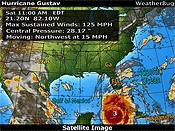Yes, Romney Can Do What Reagan Did and Produce 12 Million Jobs
 Saturday, November 3, 2012 at 11:46PM
Saturday, November 3, 2012 at 11:46PM Romney Will Create 12 Million Jobs
by Henry W. Burke
11.03.12
The Reagan Plan produced an economic recovery that created 250,000 jobs per month over the first three years. Romney's Plan for 12 million jobs in four years also equates to 250,000 jobs per month. These 12 million jobs will help middle class families move forward and restore the American dream.
Because of the similarities between Reagan's Plan and Romney's Plan, I can safely predict that the Romney Plan will be successful! A Romney White House will create an abundance of jobs and will put millions of people back to work!
Governor Mitt Romney excites Americans with his plan to create 12 million new jobs in four years. He mentioned this in his Presidential nomination acceptance speech at the Republican National Convention, and he often addresses job creation in his other speeches.
Unquestionably, Mitt Romney's presidential debate performances have propelled him to a dead heat with Obama in this race; but there are other factors at work.
The economy remains by far the top issue on voters' minds as November 6 approaches. Romney's business experience and his job creation plan are exactly what our country needs at this time.
Current Employment Picture
The "Employment Situation Summary" for October was released by the Bureau of Labor Statistics (BLS) on Friday 11.02.12.
The unemployment rate increased slightly from 7.8% in September to 7.9% in October.
The number of new jobs added during October was 171,000. Between September and October, the civilian labor force grew by 578,000. Our country needs to add at least 135,000 jobs per month to just break even with population growth.
In October, 12.3 million persons were unemployed; the total number of underemployed persons was 23.0 million. The number of long-term unemployed (those jobless for 27 weeks or more) was little changed at 5.0 million people; these individuals accounted for 40.6% of the unemployed.
It is easy to view these figures as just "numbers." These numbers represent real people. Think about it -- 23 million people are "underemployed" in this country and are struggling to pay their bills.
Unemployment is a serious matter. All of us know people who are out of work. They frequently lose confidence in themselves; they feel unworthy; and they often are depressed. Financial problems ensue; homes are lost; marriages are destroyed; and bankruptcies occur. Unemployment can impose a very heavy human toll.
No matter how Obama tries to spin it, the employment news is not good. This economy is sick!
When Obama was "selling" his $787 billion Stimulus measure in January 2009, he promised that the unemployment rate would not exceed 8.0% if the bill passed. His advisors produced a chart that showed unemployment peaking at about 7.8% in 2009 then dropping down to about 5.5% by this time in 2012. Actual unemployment has far exceeded the White House estimates.
Lessons from the Reagan Recovery
Ronald Reagan served as the 39th President of the United States from 1981 - 1989.
Reagan inherited a terrible economy from Jimmy Carter. The country spiraled into a deep recession in July 1981 that lasted 16 months and ended in November 1982.
In 1981, President Reagan formulated a plan to revitalize the economy. His plan included:
1. Reduce tax rates across the board.
2. Decrease unnecessary regulations.
3. Work with the Federal Reserve to maintain a stable monetary policy.
4. Slow the growth of federal spending.
In August 1981, President Reagan signed into law a measure that slashed marginal earned income tax rates by 25 % across the board over a three-year period.
The Reagan tax cut plan also included a reduction in the capital gains tax rate from 28% to 20%.
What happened when Reagan's Plan was implemented? After the economy received an unambiguous tax cut in January 1983, personal income tax revenues soared! Lower tax rates do not mean less tax revenue!
According to the Office of Management and Budget (OMB), tax revenues nearly doubled during the 1980s. Revenues went from about $525 billion in 1980 to about $1 trillion in 1990. By 1995, tax revenues had climbed to over $1.3 trillion. (Source: Heritage -- Chart 10).
http://www.heritage.org/research/reports/2003/08/the-historical-lessons-of-lower-tax-rates
What about job creation during the Reagan Recovery?
The 1981 Recession began in July 1981 and ended in November 1982. The Reagan Recovery started in December 1982. I obtained the employment figures for the Fourth Quarter of 1982 (Q IV-1982) and the Fourth Quarter of 1985 (Q IV-1985) from the BLS. (The fourth quarter is October, November, and December.)
Employment Growth in the Reagan Recovery
(Millions of Persons)
|
Description |
Beginning of Recovery Q IV-1982 |
36 Months into Recovery Q IV-1985 |
Change in the 3-Year Period |
|
Employed |
99.120 |
107.973 |
8.853 |
|
Civilian Labor Force |
110.959 |
116.187 |
5.228 |
|
Unemployment Rate |
10.7% |
7.1% |
-3.6% |
Source: BLS, "The Employment Situation during 1986..."
http://www.bls.gov/opub/mlr/1987/02/art1full.pdf
During the Reagan Recovery, employment grew from 99.120 million persons to 107.973 persons in the 36-month period. This is an employment growth of 8.853 million people (8,853,000).
[107.973 million - 99.120 million = 8.853 million persons]
This equates to an average employment growth rate of 250,000 jobs per month.
[8,853,000 / 36 months = 250,000 jobs per month]
The Romney Program for Economic Recovery
"The Romney Program for Economic Recovery, Growth, and Jobs" is outlined on the Mitt Romney website:
http://www.mittromney.com/jobsplan
The Mitt Romney-Paul Ryan Team has developed an excellent plan for producing a real recovery with significant job creation. The Romney Plan will achieve its objectives with four main economic pillars:
1. Stop Runaway Federal Spending and Debt
Reduce federal spending as a share of GDP (Gross Domestic Product) to 20 % by 2016.
2. Reform the Nation's Tax Code to Increase Growth and Job Creation
Reduce individual marginal tax rates across-the-board by 20 %. Keep the current low tax rates on dividends and capital gains.
Reduce the corporate tax rate from 35 % to 25 %. The U.S. now has the highest corporate tax rate in the world!
3. Reform Entitlement Programs to Ensure Their Viability
Gradually reduce growth in Social Security and Medicare for more affluent seniors. Give more choice in Medicare and provide block grants to states for Medicaid.
4. Make Growth and Cost-Benefit Analysis Important Features of Regulation
Remove regulatory impediments to energy production and innovation.
Repeal Dodd-Frank Act and repeal Obamacare!
Evaluation of Romney's Job Creation Plan
Is it reasonable for Romney to create 12 million jobs in four years? This plan equates to creating 250,000 jobs per month over his first four-year term.
[12,000,000 jobs / 48 months = 250,000 jobs per month]
Again, let's look at the facts that describe the Reagan Recovery.
When President Ronald Reagan implemented his plan to revitalize the economy, economic activity soared. Unemployment dropped by 3.6% in 3 years. Employment grew by about 9 million people in the 36-month period. This equates to an average employment growth rate of 250,000 jobs per month.
The economy quickly expanded under Reagan's plan. The Real Gross Domestic Product (GDP) increased about 8% in 12 months and 18% in 36 months.
In 1981, the stock market was at 875 (compared to about 13,000 today). The Reagan Plan launched an extended period of wealth creation. (Of course, much of this wealth was decimated in the last few years.)
Fact: Reductions in the tax rates actually produced an increase in total tax revenues. According to the OMB, tax revenues went from about $525 billion in 1980 to about $1 trillion in 1990. By 1995, tax revenues had climbed to over $1.3 trillion. Lower tax rates do not mean less tax revenue; the opposite is true.
Reagan cut marginal income tax rates by 25% across the board over a 3-year period. Romney proposes a 20% cut in the marginal rates.
Reagan reduced the capital gains tax rate from 28% to 20%. Romney would keep the current tax rates on capital gains and dividends.
On the corporate front, the Romney plan would cut the corporate tax rate from 35% to 25%. Currently, the U.S. has the highest corporate tax rate in the world!
The similarities between the Reagan plan and the Romney plan are amazing! I think it is obvious that the Romney team based much of their plan on the very successful Reagan Plan. We know what the Reagan Plan accomplished; we can expect similar results from the Romney Plan.
The Reagan Plan resulted in an average job growth rate of 250,000 jobs per month over the 3-year period. Because Romney's plan is similar to Reagan's fruitful plan, we can predict that Romney's Plan will also succeed. Romney will create an average of 250,000 jobs per month over his first 4-year term.
When Governor Mitt Romney explains his thoughtful plan, he tells enthusiastic voters that his Energy Independence Policy will create over 3 million new jobs; his Tax Reform Plan will create 7 million jobs for the middle class; and his plan to expand trade and improve job training will bring the total to over 12 million new jobs.
As I have suggested in this report, I think Romney will create the 12 million new jobs just through the tax rate reductions. When you add in the other elements of his plan (energy independence, trade, and job training), he should easily exceed 12 million new jobs.
After Reagan's tax cut plan was implemented, tax revenues almost doubled in 10 years. Just think what will happen when more tax revenue flows into the federal treasury. In combination with spending cuts, the deficits will be reduced and America will eventually see a balanced budget.
We must elect Mitt Romney and Paul Ryan on November 6 to make this happen!
===============================
Bio for Henry W. Burke
Henry Burke is a Civil Engineer with a B.S.C.E. and M.S.C.E. He has been a Registered Professional Engineer (P.E.) for 37 years and has worked as a Civil Engineer in construction for over 40 years.
Mr. Burke had a successful 27-year career with a large construction contractor.
Henry Burke serves as a full-time volunteer to oversee various construction projects. He has written numerous articles on education, engineering, construction, politics, taxes, and the economy.
Henry W. Burke
E-mail: hwburke@cox.net










Reader Comments